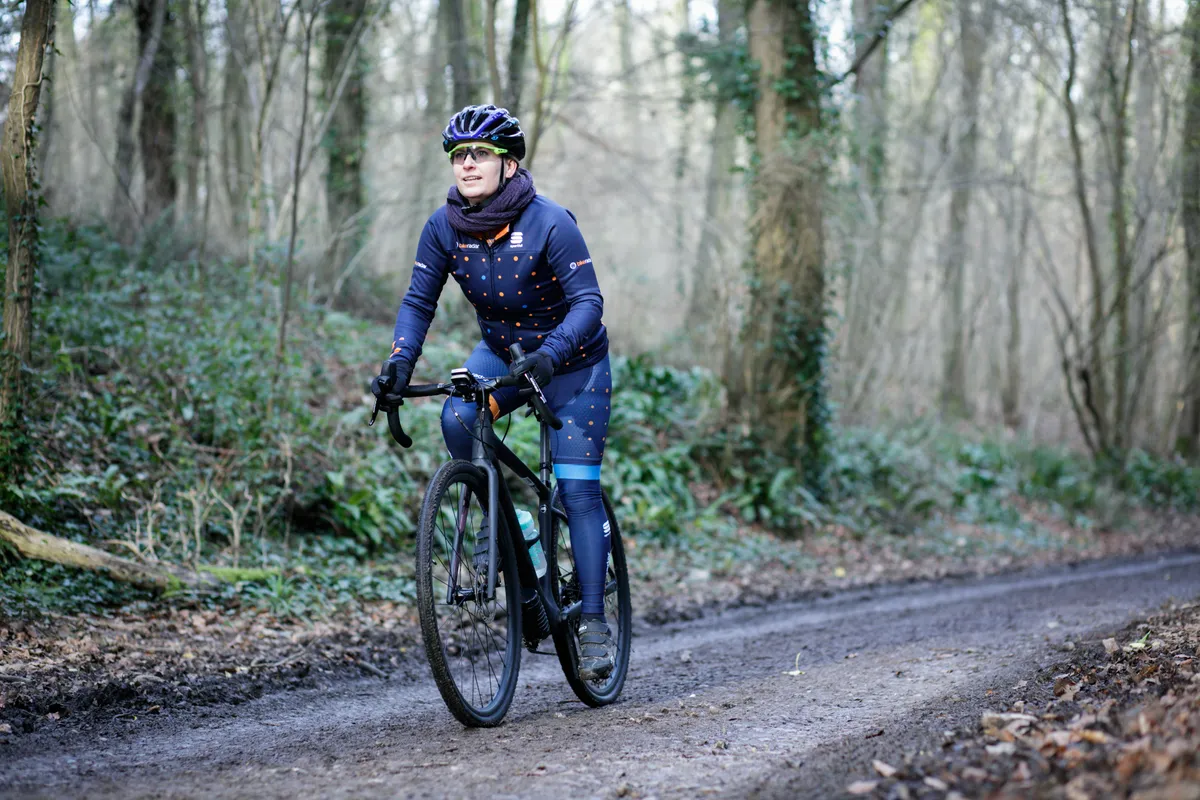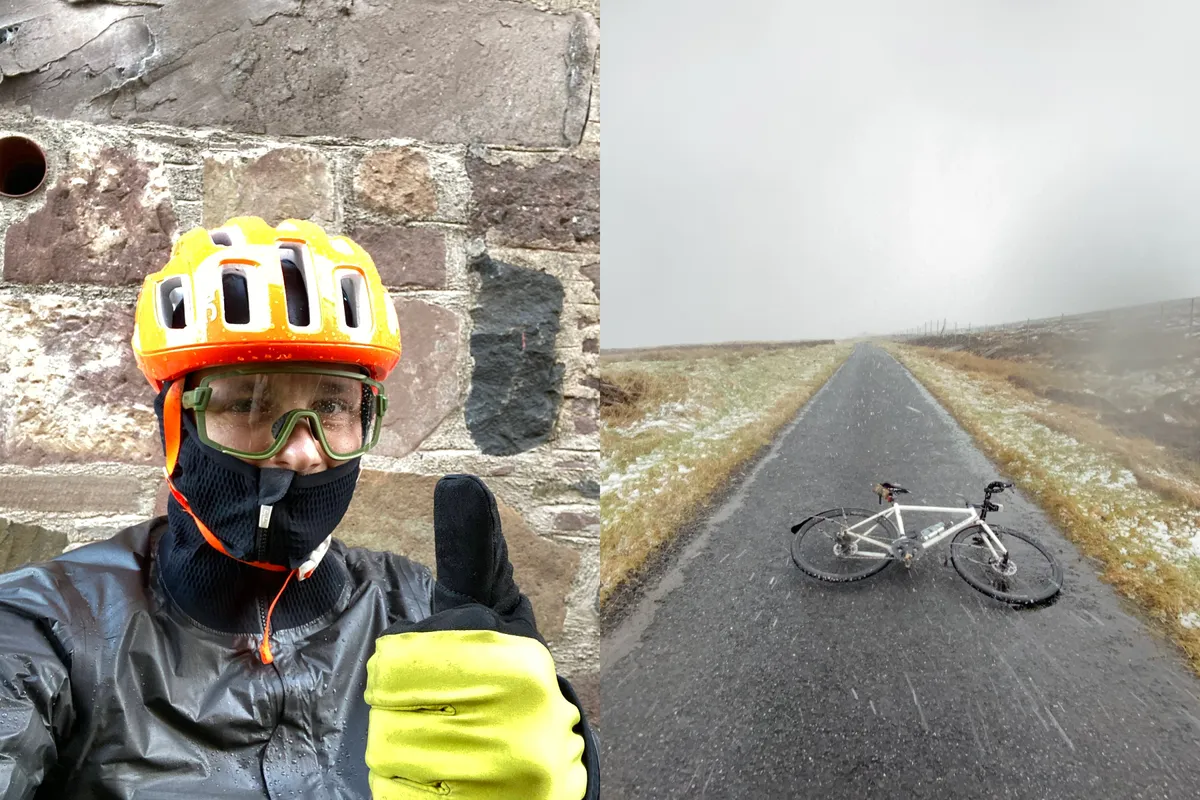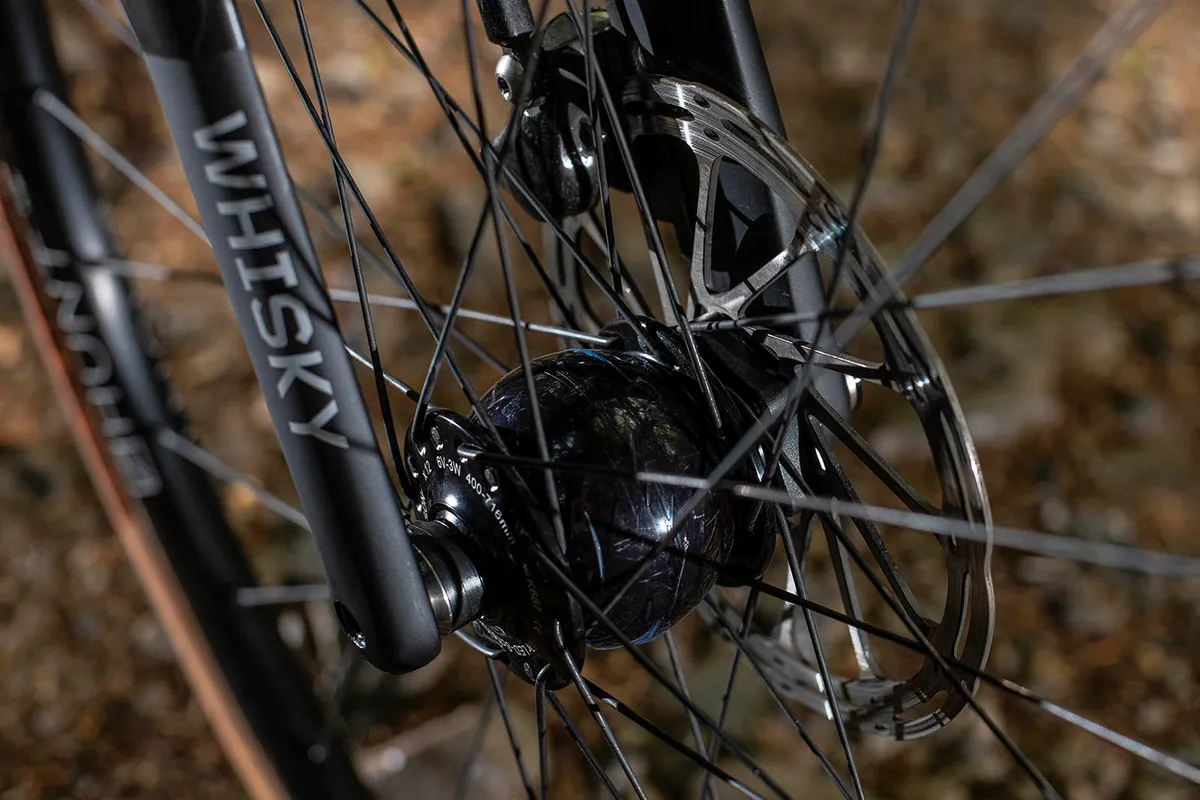Emily Chappell is an author, advocate, ultra-endurance cyclist – and BikeRadar's newest columnist. Having started commuting by bike in London in 2006, she’s worked as a courier, toured across Asia, Iceland and North America, and won the Transcontinental and the Strathpuffer races. Emily specialises (unsurprisingly) in endurance-focused bikes and, as someone who covers big miles all year round, has a nose for durable, hard-wearing kit that can cope with the worst of the British weather, as you'll find out in the first of Emily's monthly columns for BikeRadar.
I’ve ridden through enough winters that I tell myself I should know what I’m doing by now. But the worst thing about winter cycling? It finds endless ways to surprise you.
This is partly, I think, because winter just involves so many more variables than summer.
To start, there’s more kit to faff with – when I was a courier, my average job time was significantly increased by having to take off my gloves and remove my lights from my bike every single time I locked it up (I had two lights stolen before I realised it wasn’t worth skipping this step).
The weather’s worse and the roads are often in terrible condition.
The most damage I’ve ever done to a bike was riding along Canada’s Yellowhead Highway during an unseasonal thaw – all of the grit and salt that I’d expected to be frozen into the ice was swimming around in a 900km puddle of slush, which rapidly coated everything.

I regularly found mud running down my back under my clothes. And the bike, after a week of being exfoliated by this unholy mess, sounded like a wounded animal. It hasn’t been the same since.
And winter is hard on the body – a body that in many cases may already be a bit tired from all the riding we did when it was summer.
We’re more likely to get ill. Some winters I manage the Festive 500, or some silly ultra-distance challenge like a four-day LEJOG, but at least half of them I spend fighting off incessant colds.
Something about the coldness and the darkness and the dampness make me far more inclined to curl up with a book than to venture out to get covered in mud yet again.

You might have guessed, from that torrent of whinging, what sort of winter I’m currently having. But I’m still riding. Over the years I’ve figured out what mind games to play with myself in order to keep going.
The main thing I’ve learned, time and time again, is that having the right kit really does make all the difference.
When I cycled through Turkey and Iran in early 2012, the temperature regularly hit minus-25ºC – at the time, the coldest conditions I had ever experienced. And there I was, wearing my road shoes with overshoes and an extra pair of socks, wondering why I felt so miserable and pathetic.

Three years later I cycled through temperatures as low as -40ºC in Alaska, and everything felt much easier. I had learned that squeezing into as many socks as possible makes matters worse – the extra layers reduce your circulation, and there’s less space to trap warm air close to your skin.
Comparing notes with a friend who’s raced in the Yukon Arctic Ultra, we agreed that getting through the coldest challenges is far more about good admin than any notions of personal toughness. It’s about spending the time and money to ensure that you have the appropriate clothing and equipment for the conditions, and – just as crucially – that you make it as easy as possible for yourself to carry out the essential processes of eating, drinking, faffing and moving forward.
(Just last winter I called a friend to rescue me from a ride, because I got lost and my hands were too excruciatingly cold to navigate from my phone. Had I had better gloves, and bothered to use my bike computer, it would have been a different story.)
[acast acastid="bikeradarmeets-emilychappell-ultra-enduranceracer" accountid="bikeradarpodcast" /]
Find kit that works and stick with it

So now I’m permanently on the look-out for good winter cycling kit – and with the conditions I put it through, I very quickly notice if it’s not good.
One of the regular headaches of winter riding – especially if you’re female – is having to strip off your jacket, gilet and jersey, and hang them from a rusty barbed wire fence as you squat to pee in the corner of a muddy field in the rain. I once even had to be helped out of my clothes by a fellow cyclist because my hands were too frozen to manage the zips.
So Rapha’s new winter bib tights have genuinely changed my life. They do up at the back, meaning that you can squat to pee without removing a single item of clothing – even your gloves because the nifty magnetic clasp requires very little manual dexterity.

Another ongoing winter headache was happily resolved the year when I invested in a SON hub dynamo and Supernova lights. Finally, here was a lighting system that would never run out of battery, and which (since it was permanently fixed to the bike) I couldn’t lose.
I must have gone through dozens of rear lights over the years, and have wearily come to consider them disposable, since I break and lose them constantly.
This winter’s tally? One lost, two broken. And it’s only December as I write this.
I should add that I still use a battery-powered light alongside the dynamo – you can never have too many lights.
Every year I welcome my old friends from the back of the wardrobe – the Swrve Milwaukee jacket has been keeping me warm since 2008, when I struggled through my first winter as a courier. I’ve since worn it (along with Swrve’s excellent softshell trousers and Belgian caps) through winters in Turkey, Iran, Japan, Iceland, Alaska and Canada, and really my only complaint is that it’s too cosy for temperatures much above zero, so doesn’t see as much action in Bristol’s mild climate.
Some things are still a learning curve though, and I’m still looking for the perfect pair of waterproof winter cycling gloves (suggestions below, please).
Once you've cracked your kit choice, there’s great comfort in knowing you’ve got it right, and being able to head out into the worst of the weather trusting your kit to see you through it is liberating.
